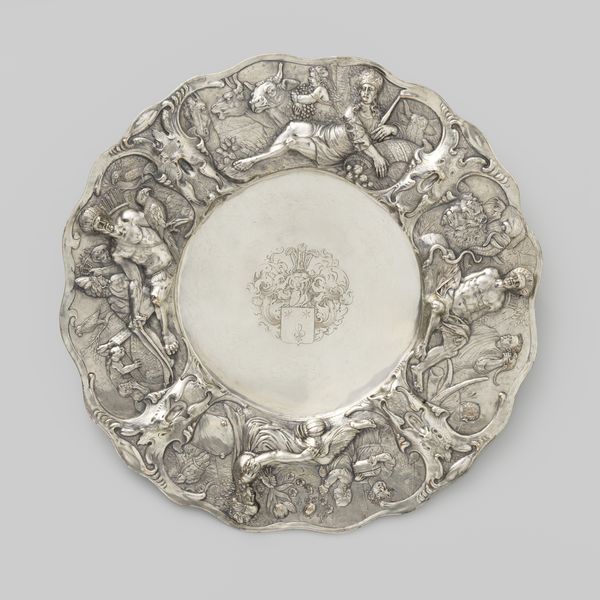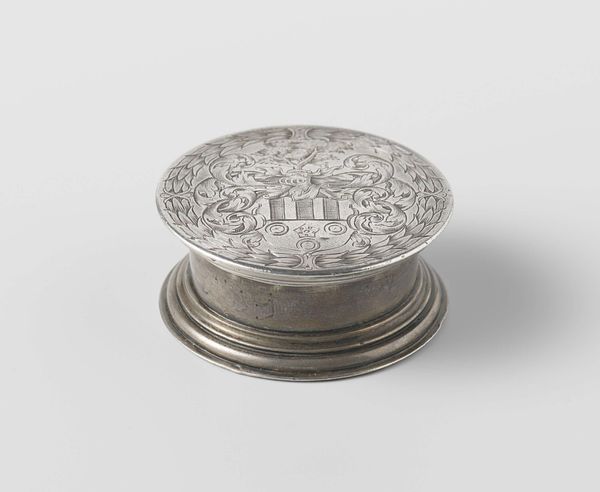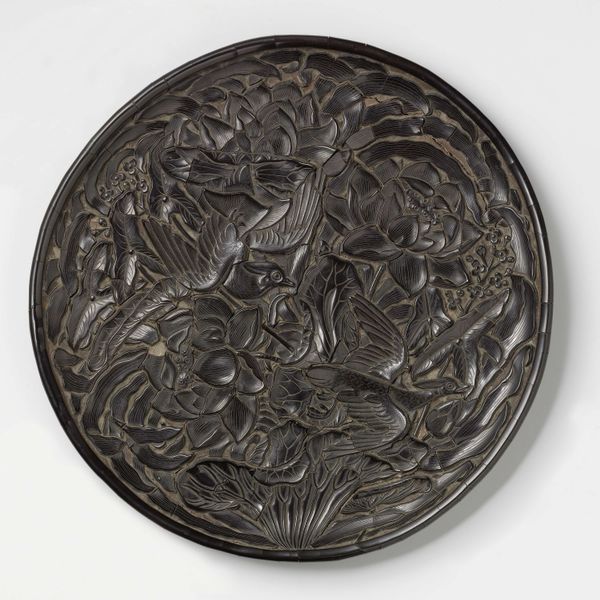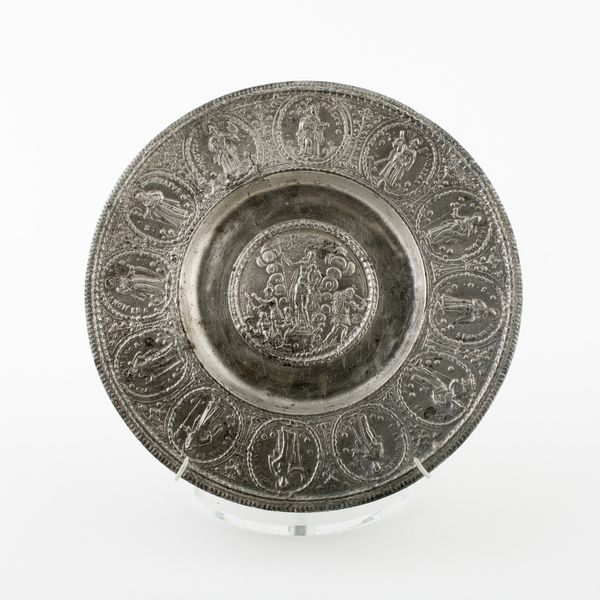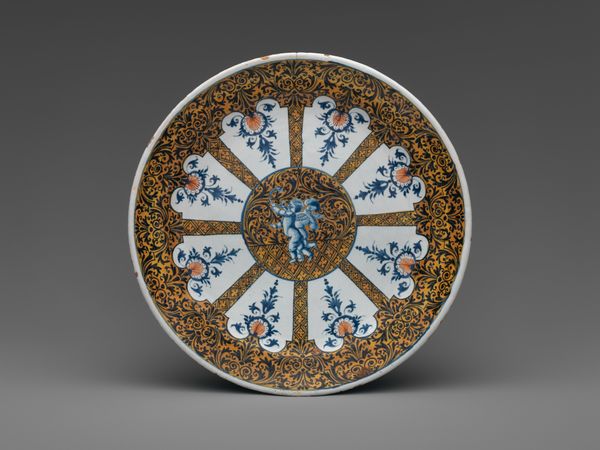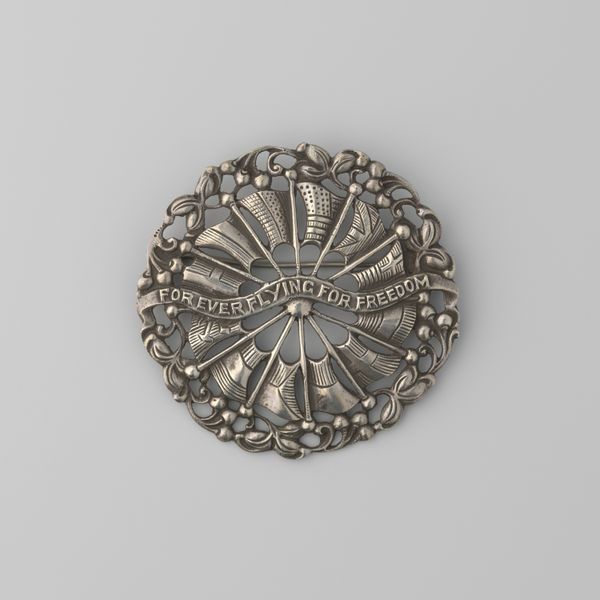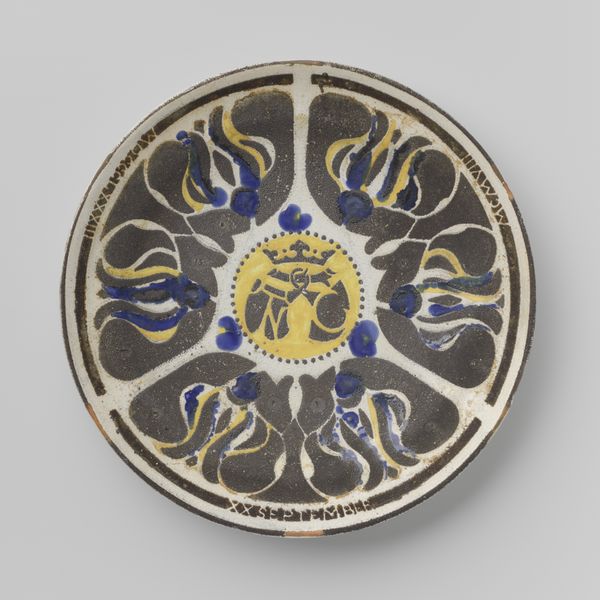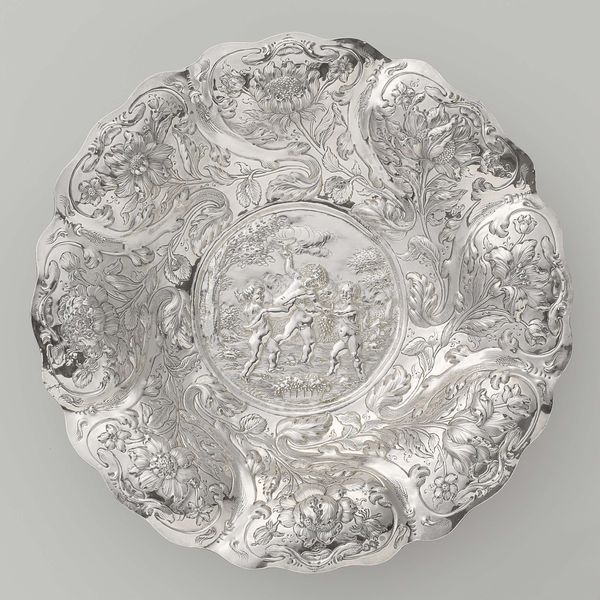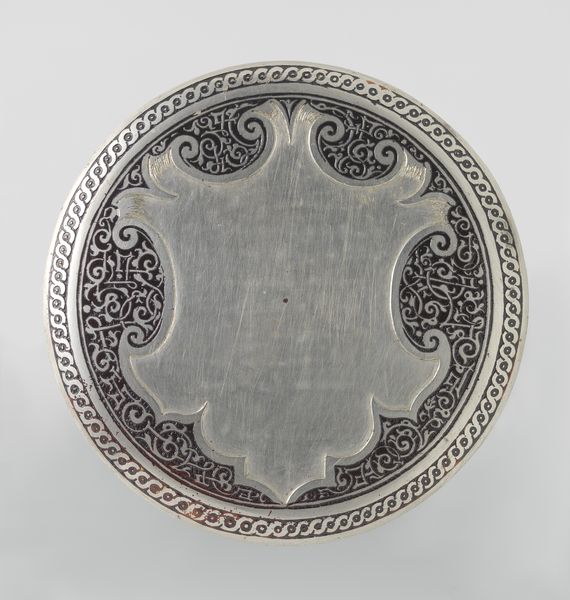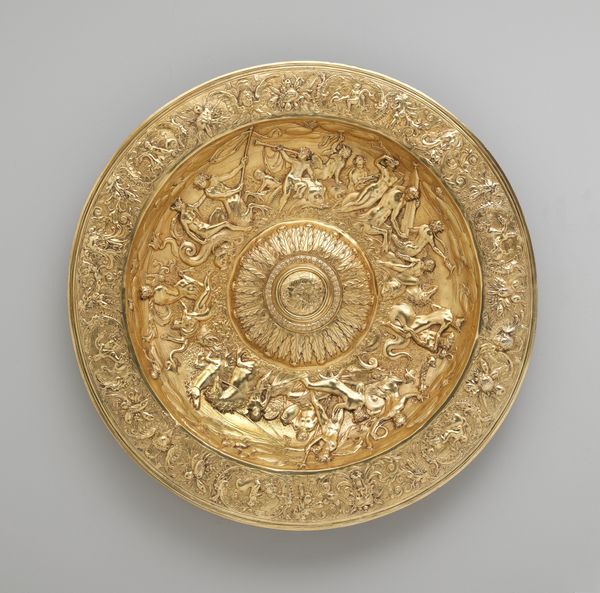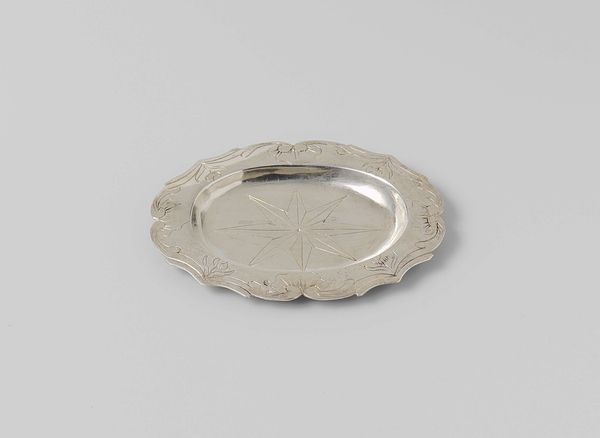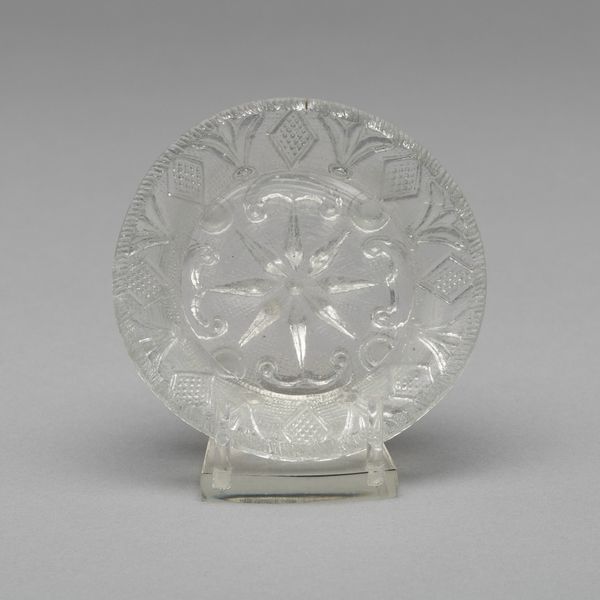
#
ornate
#
natural stone pattern
#
circular oval feature
#
decorative element
#
cake food
#
round design
#
stoneware
#
pattern repetition
#
round circular shape
#
layered pattern
Dimensions: diameter 5.8 cm, weight 58.35 gr
Copyright: Rijks Museum: Open Domain
Editor: Here we have “Vrede van Munster,” from 1648 by S.M. Boxhorn. It's incredibly intricate; I’m fascinated by the silverwork, all those tiny figures. How would you begin to unpack this piece? Curator: Well, considering it as a material object produced in 1648 gives us some insights. The choice of silver wasn't arbitrary. Silver, a valuable commodity then as now, signals wealth and power. Who commissioned this piece, and what statement were they trying to make about the 'Peace of Munster' through the display of such valuable material? Editor: That’s interesting, I hadn’t thought about silver as a deliberate choice loaded with meaning. What about the craftsmanship itself? Curator: Exactly. Look at the labor involved. Each figure, each flourish, is meticulously crafted. This wasn't mass-produced; it's the product of highly skilled artisans. How does the skill of labor contribute to the value and message conveyed? Editor: It really elevates it, doesn’t it? From functional object to a symbolic representation of… what, exactly? Triumph? The cost of peace? Curator: Precisely! Consider the social context, the treaty that this piece commemorates ended a major conflict. Therefore how does this artwork help solidify and propagate power? This could lead us into considering which social strata was it designed for consumption? Was this precious object an indication to those people of what has changed, and perhaps, what would remain unchanged? Editor: So it’s less about the artistry and more about the historical and economic implications? Curator: Not "more" – interconnected. The artistry *is* part of the economic and historical picture. The materials, the making, and the message are inseparable. This reframing enriches our appreciation, seeing it less as a static artwork and more as evidence of complex social relationships. Editor: That's given me a lot to consider about the way value is constructed in art. I see that these items aren’t only material things. Thanks so much. Curator: Indeed, viewing art through the lens of production makes you rethink the relationship among artist, artifact, and viewer, so, it gives you a unique new view.
Comments
No comments
Be the first to comment and join the conversation on the ultimate creative platform.
